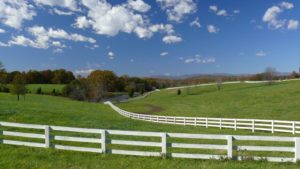Why Can Appraising Farmland Be Challenging?
Based on the USDA’s Economic Research Service (ERS), the average value of land makes up 81% of a farm’s value. Incorrectly appraised farmland can cause significant losses to the owner, yet evaluating that farmland can be challenging as well.
Heterogeneous
Similar properties are simple to evaluate since you can use comparison strategies. Yet when properties are specialized and unique, such as farms, the difficulties of the evaluation escalades. Appraisers must spend more time evaluating every aspect of the property, the specific market demand, and rely on extraordinary assumptions to derive values. There is also more room for errors since extraordinary assumptions of value include estimations and opinions.
Categorizing the Farmland
Based on the highest and best use of the property, farmland can be organized and specified by multiple categories. One classification is based on soil quality. Soils are classified by Class I-VII and each class details the limitations of the specific soils. Farmland can also be classified by its irrigation. While property’s can only be irrigated or not irrigated, for prospective owners that want to bail hay this can be a key classification. Finally, the farmland’s use can classify whether the land would be best-suited for crops, pastures, forest, etc.
Finding an Appraiser
Experience is key. Finding an experienced, educated appraiser familiar with your local real estate market can sometimes be challenging. Take your time and do your research on the experience, licenses, and qualifications of potential appraisers.
By Anna Hellman
-
Articles
- April 2024
- March 2024
- February 2024
- January 2024
- December 2023
- November 2023
- October 2023
- September 2023
- August 2023
- July 2023
- June 2023
- May 2023
- April 2023
- March 2023
- February 2023
- December 2022
- November 2022
- October 2022
- September 2022
- August 2022
- July 2022
- June 2022
- May 2022
- April 2022
- March 2022
- February 2022
- January 2022
- December 2021
- November 2021
- October 2021
- September 2021
- August 2021
- July 2021
- May 2021
- April 2021
- March 2021
- February 2021
- January 2021
- December 2020
- November 2020
- October 2020
- September 2020
- August 2020
- July 2020
- June 2020
- May 2020
- April 2020
- March 2020
- February 2020
- January 2020
- December 2019
- November 2019
- October 2019
- September 2019
- August 2019
- July 2019
- June 2019
- May 2019
- April 2019
- March 2019
- February 2019
- January 2019
- December 2018
- November 2018
- October 2018
- September 2018
- August 2018
- July 2018
- June 2018
- May 2018
- April 2018
- March 2018
- February 2018
- January 2018
- November 2017
- October 2017
- September 2017
- August 2017
- July 2017
- June 2017
- May 2017
- April 2017
- March 2017
- February 2017
- January 2017
- December 2016
- October 2016
- September 2016
- August 2016
- July 2016
- June 2016
- May 2016
- April 2016
- March 2016
- February 2016
- January 2016
- December 2015
- November 2015
- October 2015
- August 2015
- June 2015
- May 2015
- March 2015
- November 2014
- March 2014
- October 2013
- September 2013
- August 2013
- January 2013
- December 2012
- November 2012
- October 2012
- September 2012
- January 2012
- October 2011
- September 2011
- August 2011
- July 2011
- June 2011
- February 2011
-
Meta






